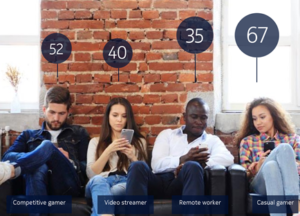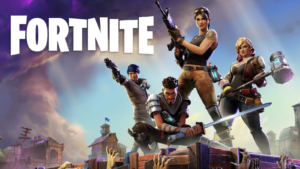
Leveraging AI to Deliver a Personalized Experience in the New Normal

(Black-Salmon/Shutterstock)
In today’s world, gaming, video streaming and social sharing experiences drive consumer broadband usage in both mobile and fixed networks. These same activities are the ones which have grown the most during the global pandemic and in our “new normal,” and together sum up to 80% of Internet traffic worldwide.
Bad experiences with these applications cause consumers to switch plans or even switch their communication service provider (CSP) altogether.
In fact, 50% of smartphone users will be ready to switch their provider in 12 months if they cannot enjoy immersive experiences, such as gaming, virtual travel, video capture and streaming (e.g. while mobile or at large events), or smart home video detection, such as a package delivery or if someone is at the door, according to research conducted by Nokia.
Those most likely to switch are highly engaged users – such as remote workers, gamers, video streamers – who manage their lives on their smartphones. They represent a higher lifetime value to their providers than those who don’t show interest.
For fixed networks, the top list also includes remote conferencing (Teams, Webex, Zoom) and VPNs used by remote workers and students.
All these applications and services are highly experience-sensitive. Providers need to ensure their customers get the experience they are expecting based on their needs, at the right time and location, in the devices they use, and in the touch points they interact with (network, customer care, billing, etc.).
How Artificial Intelligence and Machine Learning Can Help

Use of video conferencing apps like Zoom has skyrocketed under COVID-19 (Kate Kultsevych/Shutterstock)
It is key to understand how different subscribers perceive different experiences while gaming, attending a smart venue or traveling virtually. Each of these experiences will vary for different individuals: e.g. a man in his 30s who works from home versus a teenager who moves around the city. These experiences need to be predicted across various touch points, such as OTT game apps or smart venues, the network, call center, retail, and billing.
It is also crucial to proactively identify anomalies and factors contributing to a negative experience or positive experience in order to act fast to resolve issues before they impact gaming customers, or to target the right customers at the optimal time for an add-on purchase in a smart venue.
The application of AI and ML brings intelligent insights that are more precise than those produced by existing processes and systems, and enables the CSP to predict changes or anomalies in their customers’ experiences.
AI and ML enable the possibility to look at each subscriber based on their individual profile, including demographics, device used or mobility to predict the experience more accurately, and taking into account the individual sensitivities, biases and expectations. The insights software learns with changing dynamics either at the CSPs network, customer segment or market and adapts predictions accordingly.
Use Case 1: Gaming Experiences
Gaming has grown exponentially during the global pandemic and the new normal. For a fixed CSP, gaming traffic increased by 600% in the first weeks of the lockdown, with the number of subscribers gradually increasing for family games, and people playing all day with the same level of usage until late in the night.
Concretely, cloud gaming has become increasingly popular since the start of the pandemic, and it has the potential to change the playing field for CSPs significantly due to its high bandwidth and low latency requirements. However, it only works if connectivity is good.
Cloud gaming also means a broader segment of players globally, according to Google Cloud CEO Thomas Kurian. “For every person in the world that games on a professional desktop, there are probably three who can’t afford one,” Kurian said. “Our hope is that [cloud gaming] is expanding the market, not just being a replacement market.”
This means gamers can vary across several types of profiles, such as gaming professionals (who should be considered small companies by CSPs), competitive gamers (teenagers who play for money) and casual gamers.
Teenagers today don’t play games, such as Fortnite, on their mobile devices because they get dominated by competitors on fixed lines with faster network speeds. CSPs need to be able to predict these customer expectations and sensitivities, and solve anomalies before they impact the gaming experience, making profiles crucial for proactively managing networks.
The connection has to be excellent end to end, every millisecond counts, from the game server to the game device, fixed or mobile, including the Wi-Fi in the house, for example.
Gamers who don’t get the experience they expect will switch, and communicate why to the gaming community.
Investing in game experience is key due to this community effect. Both good and bad experiences are magnified.
Use Case 2: Social Sharing Experiences in Smart Venues
Looking at another example that will become relevant again once things start opening up – research from January 2020 shows 78% of smartphone owners attended a live event or entertainment activity in the previous 12 months.

Different people have different perceived experiences based on their profiles (Image courtesy Nokia)
For most attendees, the mobile experience is less than ideal at these events: “I went to MetLife stadium…and I can’t do anything with my phone. I could text and call… but if I wanted to send a Snapchat or post a story, it struggles to work at a big concert or big event like that.”
Additionally, smart venue related add-on purchases are the top desired business model for this kind of event. CSPs need to ensure they have an accurate understanding of each individual experience when targeting add-on purchases or optimizing networks during a surge.
In these examples, a holistic approach to data collection, analysis and consumption is needed to produce reliable, robust and scalable experience insights, based on rich and diverse data sets.
Sharing these personalized experience insights across the organization, brings greater consistency between the decision-making processes, both tactical and strategic. This means having a common language across CSP’s functions, such as operations, care, marketing and management, and it requires open, well-governed access to data, with flexible options to consume it.
Real-time and predictive capabilities enable insights which reflect “in-the-moment” customer experiences, instead of reactive, “after-the-fact” reporting. Domain specific processes and tools are triggered in real-time, accelerating time to action and proactively improving each customer journey.
It is important also to target industrialized scale with ML. This means addressing thousands of users with analytics use cases, and implementing seamless end to end pipelines from the current training and testing environments to real production systems, to accelerate the deployment of productized ML use cases.
Ultimately by leveraging AI and ML, CSPs receive priceless insights into every moment with each and every customer, in real-time, enabling them to better meet their needs before issues arise and ensure positive experiences for all customers regardless of fluctuating demands caused by the global pandemic.
Author Bio: Araceli del Río Sastre works in Nokia Software, Digital Insights product management, heading strategy and portfolio development. She has a wide-ranging background which includes business development, marketing and sales, as well as service delivery and software development in OSS and BSS domains. She has lived in several countries and enjoys a multi-cultural family.
Related Items:
2020: The Year of the AI-Powered User Experience
Three Pillars of Stellar Service Provider Customer Experience




























